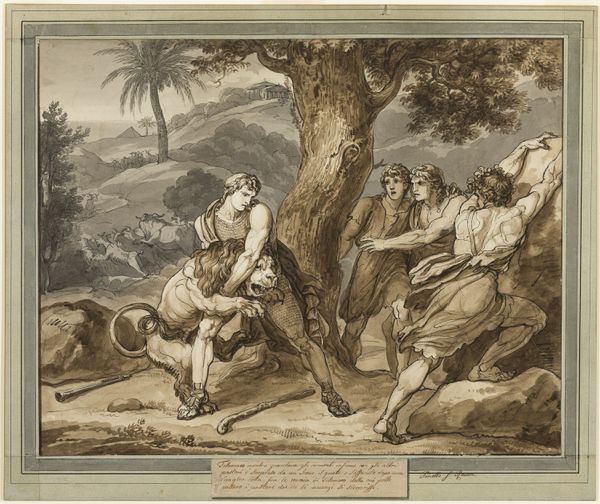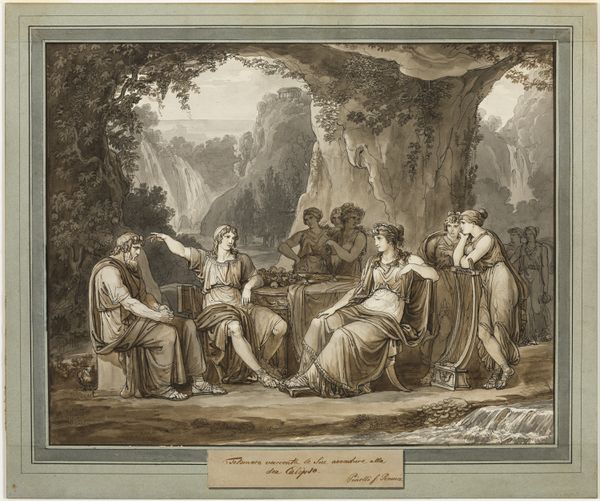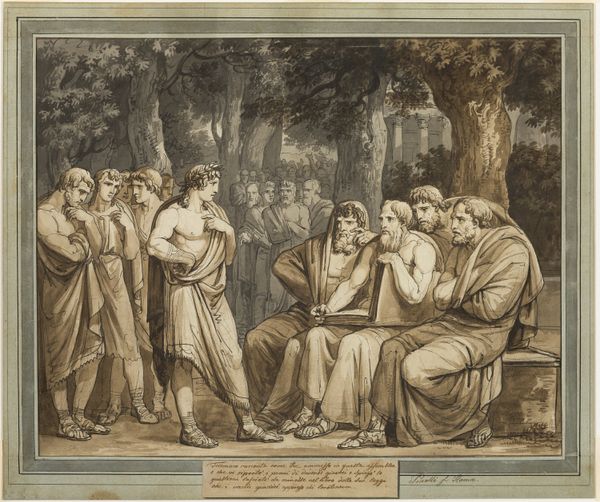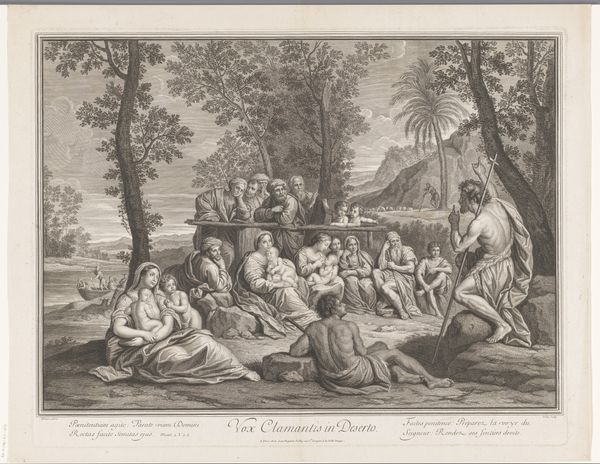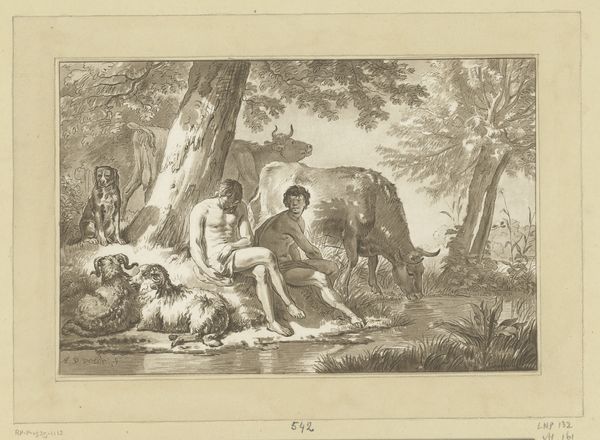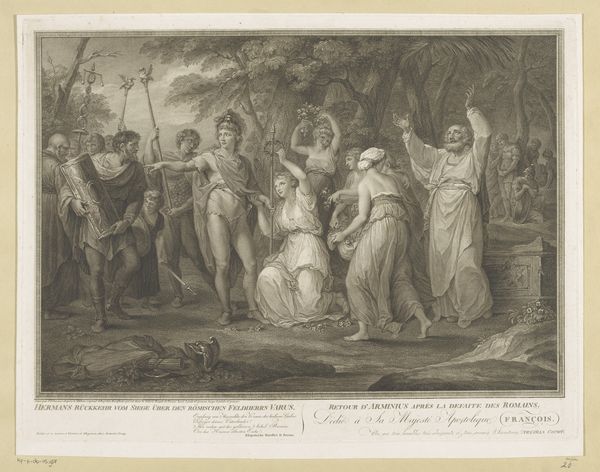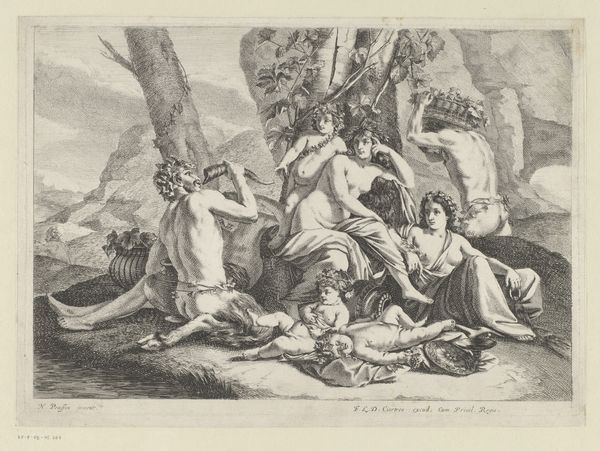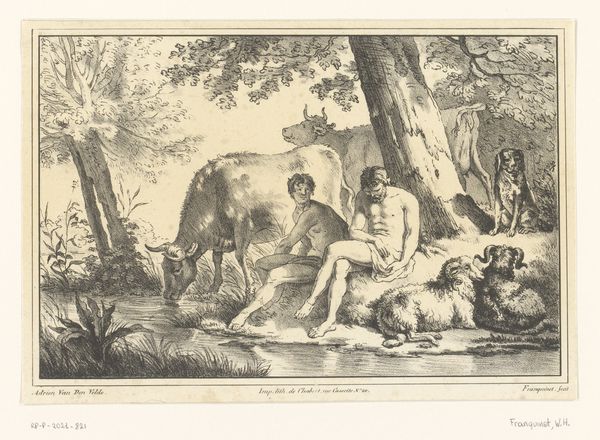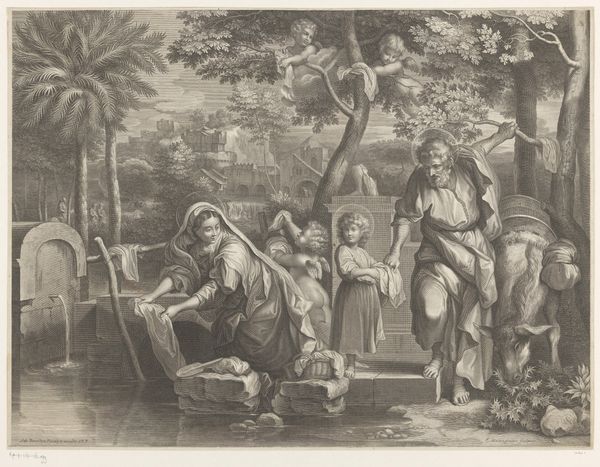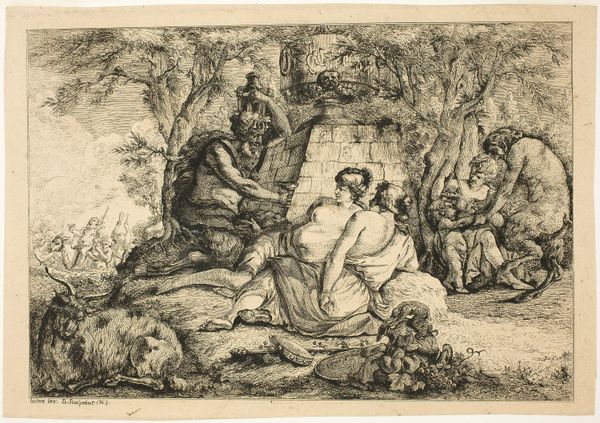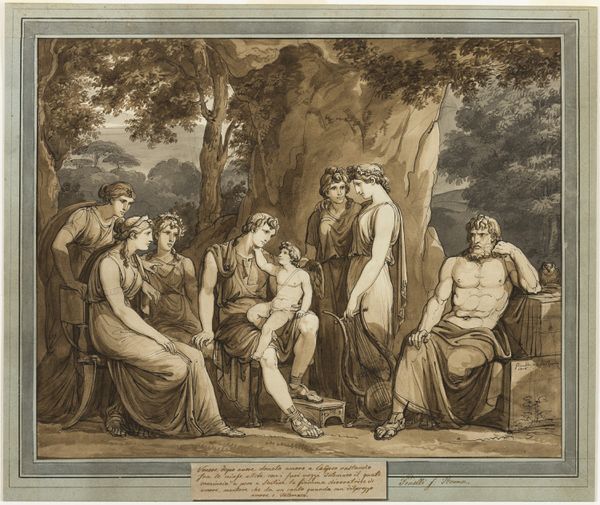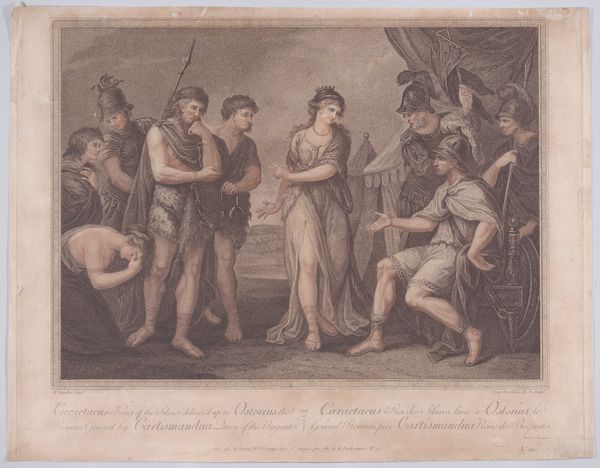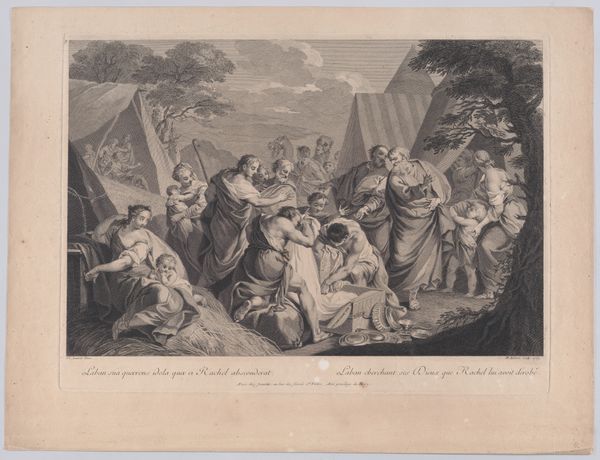
Telemachus Plays and Sings to the Shepherds in Egypt, from The Adventures of Telemachus, Book 2 1808
0:00
0:00
drawing, print, paper, ink, charcoal
#
drawing
#
neoclacissism
#
narrative-art
# print
#
landscape
#
charcoal drawing
#
figuration
#
paper
#
ink
#
classicism
#
genre-painting
#
charcoal
#
history-painting
Dimensions: 460 × 588 mm (sight); 558 × 667 mm (overall)
Copyright: Public Domain
Editor: This is "Telemachus Plays and Sings to the Shepherds in Egypt," a drawing from 1808 by Bartolomeo Pinelli. It's rendered in ink and charcoal. I'm immediately struck by how the figures dominate the landscape, even though the landscape is still pretty impressive. What compositional choices do you notice? Curator: Observe how Pinelli organizes the figures. Consider their placement – the clustering, the angles of their bodies, their relationships. The tonal variations, achieved through ink and charcoal, generate spatial recession. What impression do these create for you? Editor: The way they’re grouped almost feels theatrical, like a stage. I also notice that it seems he employs some contrasting light and shadows to distinguish foreground figures from the backdrop. Curator: Precisely. Note also the linearity – how the lines delineate form and structure. The relationship between line and shading generates a sophisticated compositional architecture. Does the distribution of light guide your viewing? Editor: It does, and thinking about light, I notice that the palm trees on the sides seem to enclose the figures, even with that beautiful landscape behind them. Curator: Yes, they almost bracket the action. These bracketing devices affect the viewer’s perception and influence our reading of space and form. Notice also the differing treatment between planes and their relation to each other: are these variations unified within the design? Editor: It’s fascinating to consider how all the elements contribute to an overall sense of harmony. I really appreciate you walking me through how the composition influences our understanding of the piece. Curator: Indeed, recognizing and dissecting the compositional framework provides richer insight, doesn't it? A focus on intrinsic pictorial properties reveals that art making operates under structural frameworks.
Comments
No comments
Be the first to comment and join the conversation on the ultimate creative platform.
